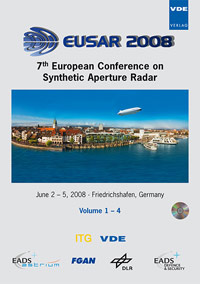Analysis and Extension of Loffeld’s Bistatic Formula in Spaceborne/Airborne Configuration
Conference: EUSAR 2008 - 7th European Conference on Synthetic Aperture Radar
06/02/2008 - 06/05/2008 at Friedrichshafen, Germany
Proceedings: EUSAR 2008
Pages: 4Language: englishTyp: PDF
Personal VDE Members are entitled to a 10% discount on this title
Authors:
Wang, Robert; Loffeld, Otmar; Ul-Ann, Qurat; Nies, Holger; Ortiz, Amaya Medrano; Knedlik, Stefan (Center for Sensorsystems (ZESS), University of Siegen, Paul-Bonatz-Str. 9-11, D-57068 Siegen, Germany)
Abstract:
In this paper, we focus on the application of Loffeld’s bistatic formula (LBF) in the case of spaceborne/airborne configuration. For general bistatic configurations, LBF works well. However, because spaceborne/airborne case is the high bistatic grade configuration, LBF might degrade the image quality. The reason is that the equal contributions of transmitter and receiver to the overall phase modulation of the azimuth signal are assumed. To address this problem, the azimuth time-bandwidth products (TBP) are used to weight the contributions of transmitter and receiver to the overall phase modulation of the azimuth signal. Based on the weighting operation, we extend LBF to work in the spaceborne/airborne configuration. Simulation results validate our extension.


